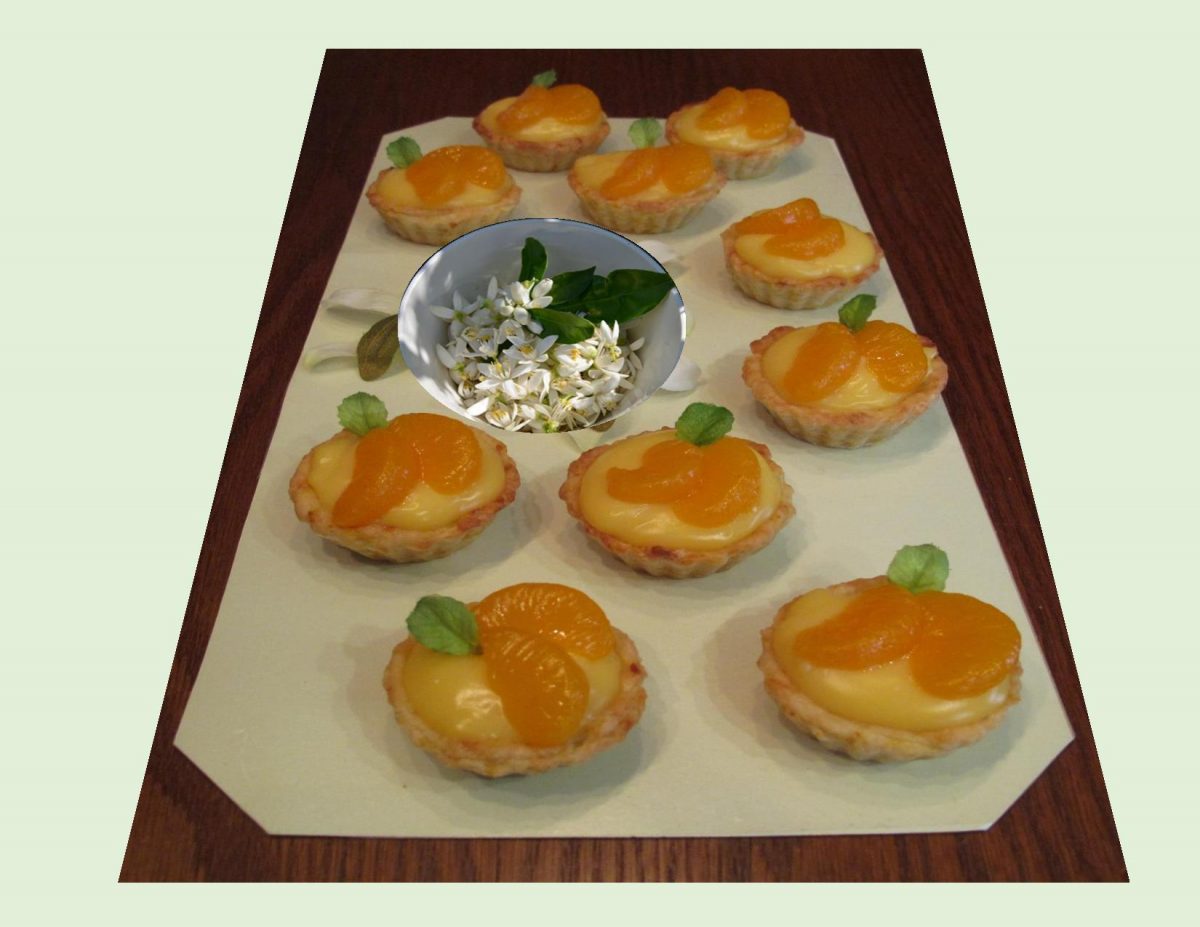Although mandarin oranges are a traditional holiday food, they sure make a wonderful bit of sunshine for us still in the colder part of our year.
Very often when I go to make something and the recipe calls for orange or lemon zest, its not something I have on hand. I guess its all about thinking ahead and drying the citrus peels when I do have them. There is no magic secret … just time and patience. Wash and dry the fruit, lightly grate off only the top layer of peel. Transfer to a flat dish to dry then store the zest in a glass jar. When it comes time to use, crush some between your fingers before adding it to other ingredients. This will release the citrus essence and flavor.
There is no comparison between artificial flavors and real citrus zest in baked goods. These little mandarin tarts not only use it in the filling but the pastry as well.
There are various other uses for citrus zest such as in poultry marinades, baked into breads or for a splash of flavor in tea. These tarts made such a simple little refreshing dessert.

| Servings |
|
- 1 1/4 cups flour
- 3 Tbsp sugar
- 2 Tbsp orange zest
- 6 Tbsp cold butter
- 1/3 cup fresh mandarin juice
- 3 egg yolks
- 1/4 cup sugar
- 2 Tbsp cornstarch
- 2 mandarin oranges Zest from 2 oranges, Juice from 1 orange
- 3/4 cup milk
- mandarin orange segments, for decoration
- Apricot jelly to glaze orange segments
Ingredients
Orange Pastry
Mandarin Orange Pastry Cream
|

|
- Preheat oven to 350 F.
- In a bowl, whisk flour, sugar & zest. Add butter & blend with pastry blender until mixture resembles coarse meal. Gradually add the orange juice, using enough to form a dough that cleans the sides of the bowl.
- Roll out dough on a lightly floured work surface. Using a 2 1/2-inch cutter, make 12 circles & fit into tart pan cups. Line the pastry with foil & add pastry weights. Bake about 10-15 minutes. Remove weights & foil & bake 10 minutes longer until pastry is golden.
- In a bowl, whisk together egg yolks, sugar & cornstarch until it turns pale yellow.
- In a saucepan, combine milk & orange zest; bring to a boil. Remove from heat, slowly add a egg mixture a little at a time, whisking well until fully incorporated.
- Return mixture to heat & keep whisking over medium heat until it thickens. Stir in orange juice. Transfer to a bowl & cover with plastic wrap, making sure the wrap touches the surface of the pastry cream. When it comes to room temperature, refrigerate.
- When cooled & you are ready to use the pastry cream, whisk with an electric mixer for 15-20 seconds to a smooth & spreadable texture. Spoon filling into baked tart shells. Top each with a couple of mandarin orange slices. Brush oranges with a bit of apricot jelly.
- If pastry weights are not available, reverse you tart pan & place pastry rounds over the bottoms of tart cups to bake.
- If you use canned mandarins for decoration, drain & blot on paper towel to remove excess liquid.

























